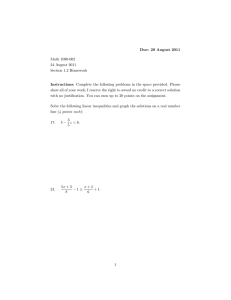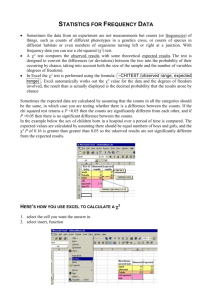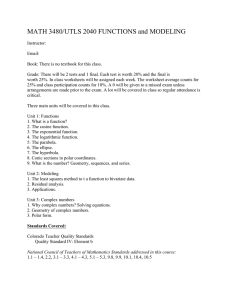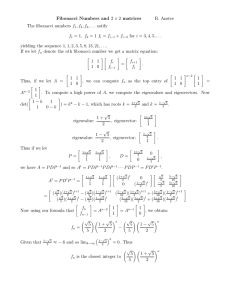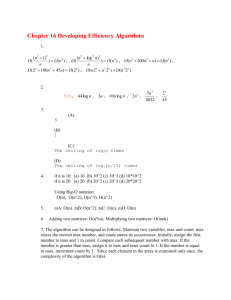Lec. 3 A
advertisement
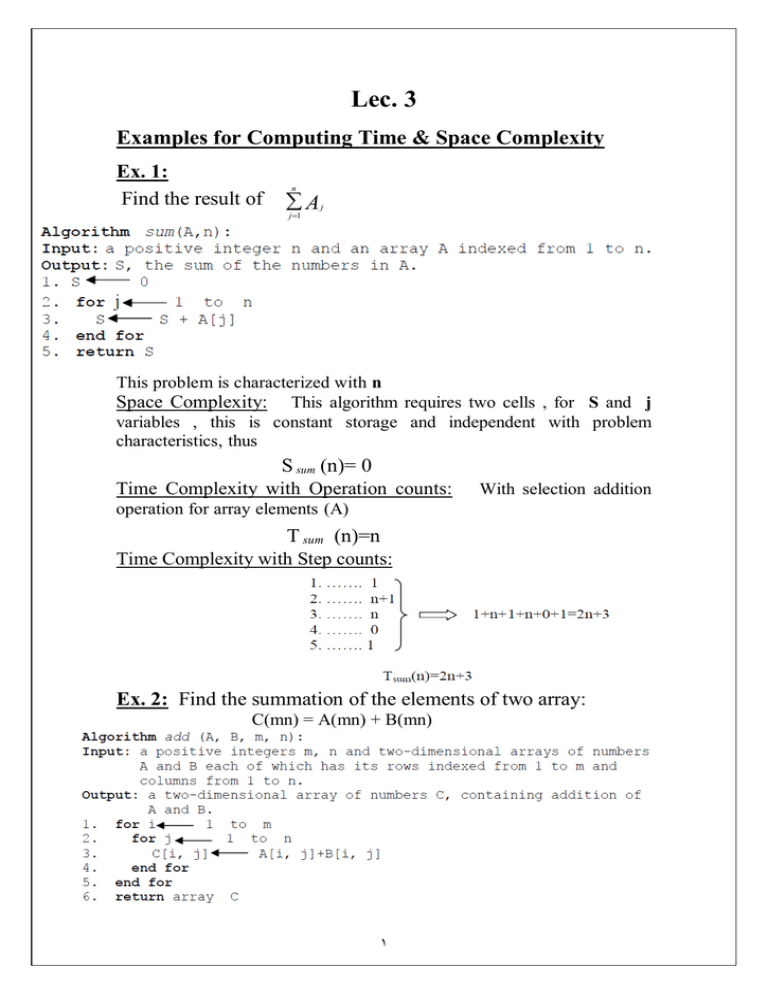
Lec. 3 Examples for Computing Time & Space Complexity Ex. 1: Find the result of n A j 1 j This problem is characterized with n Space Complexity: This algorithm requires two cells , for S and j variables , this is constant storage and independent with problem characteristics, thus S sum (n)= 0 Time Complexity with Operation counts: With selection addition operation for array elements (A) T sum (n)=n Time Complexity with Step counts: Ex. 2: Find the summation of the elements of two array: C(mn) = A(mn) + B(mn) 1 This problem is characterized with m and n Space Complexity: S add (m,n) =mn + 2 (where mn is array size, 2 for i, j). Time Complexity with Operation counts: With selection addition operation between the elements of (A), (B) arrays T add (m,n) = mn Time Complexity with Step counts: Note: This expression is accepted when n>=m, but when m>n , two for statements are replaced to decrease time complexity , it becomes: H.W. : Compute space and time complexity of a problem which finds the summation of the elements of two array: Z(n) = X(n) + Y(n) Ex. 3: Fibonacci Numbers. It is starting as: 0, 1, 1, 2, 3, 5, 8, 13, 21, 34, 55, ………… Where as every new number will be getting through adding two previous numbers, if first number in Fibonacci is F0, then F0=0 and F1=1, in general: Fn = Fn-1 + Fn-2 , n>=2 . 2 This problem is characterized with n. Space Complexity: This algorithm requires four cells , for storing the values of fib, fnm1, fnm2 and i, this is constant storage and independent with problem characteristics, thus Sfibonacci(n) = 0 Time Complexity with Operation counts: With selection assignment operation between the elements of Fibonacci numbers: Time Complexity with Step counts: Two cases must be considered in this method: First case : when n=0 or n=1, number of steps is 3. Second case : when n>1, number of steps is 4n+1. There is a relationship between time complexity and problem's characteristics, where as increasing n leads to linear increasing in time complexity, which is better than squared increasing. Note: In most problems there is a balance between amount of time and algorithm's space, more storage leads to increase running speed, and the reverse of this statement is true. Ex. 4: Reform Fibonacci algorithm. Space Complexity: Time Complexity with Step counts: 3 Ex. 5: Compute Prefix averages for set of numbers. Problem concept is there is a certain array lets X of n integer numbers, the required is computing another array lets A, where an element A[i] is the average of elements from X[1] to X[i] for i=1 … n , it is meaning: This problem is characterized with n. Time Complexity with Step counts: === The function of time complexity of prefix average problem (with the above algorithm) is square. 4
